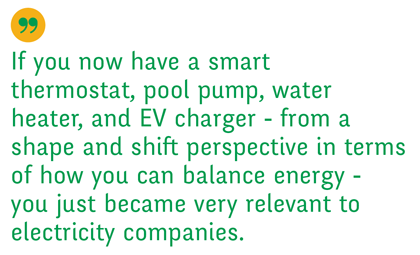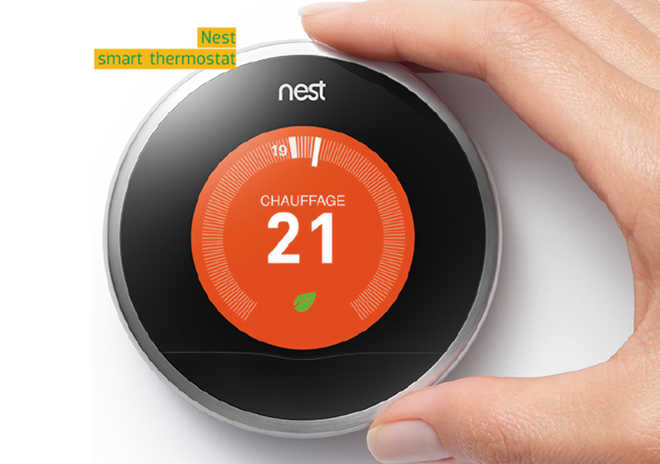There’s a new macro trend occurring with electricity rate structures. In an effort by utilities to match their real-time costs with pricing models, new variable rates are being tested and implemented. The problem is that the cost to generate and distribute power is extremely variable, and has a lot to do with what’s happening on the grid. So, there is a new focus on “capacity efficiency,” which is a measure of the grid’s capability to supply a given level of energy demand at any point in time.
In recent years, the US has experienced a relative spike in energy abundance, and an ever-growing focus on creating more energy-efficient systems. The emphasis is now shifting towards being able to meet peaks in demand in more reliable ways by creating a grid that is capacity-efficient and flexible enough to react to sudden changes in load or generation.
In July, the utility-funded Electric Power Research Institute (EPRI) published a new report on this very subject. Capacity and Energy in the Integrated Grid reveals some key insights about the capacity challenges, showing that “in some regions of the US and other countries, peak system load is increasing at a faster rate than overall energy consumption.”
The report also highlights some potential solutions, including efforts by the utilities to help educate residential customers about the challenges of capacity-related costs through the use of special time-of-use (TOU) pricing. Essentially, where they’re permitted by regulators, utility companies are saying to customers, “This is my true cost to meet the grid demand at the moment, so this is what I’m going to charge you for electricity.”
However, as EPRI’s Senior Vice President of Research and Development Arshad Mansoor explained, complicated pricing structures are not likely to affect the energy consumption of the average consumer unless there is a high level of automation in the home. “Customers will never actively be managing their demand,” Mansoor recently told GreentechMedia.com. “That’s where the technology comes into play – understanding a building’s load profile, and charging and discharging storage at the right times to actively manage that building’s demand. That’s an active algorithmic challenge.”
Enter plug-in vehicles and smart charging products – a perfect technological fit to meet the challenges of capacity efficiency.
More than an outlet
John DeBoer, Product Introduction Manager at Siemens, recently told Charged that the electric utility companies are now looking to his industry to support them with products that will make home automation easier for consumers. We discussed the emerging trends in electricity rates while Siemens was giving us an early look at its newest residential charging station.
The VersiCharge SG is Siemens’ first home charging station that is WiFi-enabled, and one of the first in the industry to add connectivity. However, DeBoer believes that it won’t be the last. “I think it’s going to be within the next year or two that all of them will be [connected],” he said. “If you think about it from a cost savings perspective, you can recoup the value very quickly with just a few intelligent planning sessions and TOU, real-time pricing or special tier pricing.”
DeBoer reports seeing teaser rates as low as 2 to 4 cents per kWh, which is the equivalent of paying about 20-50 cents per gallon for gasoline. More common TOU rate plans range from around 10 cents per kWh for nighttime off-peak to about 30 or 40 cents per kWh for peak times of day, depending on the time of year.
Offering charging stations that can take control of syncing charging times with the special rate periods is a very attractive proposition for EV owners. It could change the equation for the payback period of the vehicle and accelerate the transition to subsidy-free EVs that have a lower cost of ownership than their gas-powered equivalents.
DeBoer explains that the VersiCharge SG was designed with that in mind. “We’ve added a whole bunch of different scheduling features and functions that allow for both time management and power management. It’s more flexible than just delaying it for 2, 4, 6 or 8 hours. Now you can say things like, ‘Charge at half power when I first get home until 9 pm and then fill me up the rest of the way after midnight.’ So in case you have to go out right away you have an option. It puts a lot more flexibility and control in the hands of the EV owner.”
The WiFi-enabled unit is cloud-connected, allowing it to interact with utilities to receive demand response and pricing signals. When the demand response functionality is enabled, utilities and energy aggregators can throttle EV charging as part of a distributed energy management strategy to increase capacity efficiency while minimizing peak demand.
Today, however, the number of service areas in the country that offer a variable pricing structure is still low. Of course, Siemens touts other reasons why connecting its VersiCharge SG will be a win for customers.
Awareness, readiness, reliability
“The VersiCharge SG solves two of the longest-lasting challenges associated with EV ownership – the uncertainty around the actual power being consumed and the ability to easily control energy consumption,” said Barry Powell, head of Siemens Low Voltage & Products.
“When you first buy an EV, you get it home and then wonder, ‘What is this doing to my monthly bill?’” said DeBoer. So, the VersiCharge SG has a revenue-accurate submeter built into it that will collect all that information and stream it to the cloud for viewing on all of the popular modern devices (Android/iOS apps and website access). Users can view past power consumption data, including usage and cost, in a graphical form.
Ideally, as drivers start to use connected chargers and think more clearly about the costs of driving on electricity, transitioning them to use opt-in special pricing will have less friction.
“The direction we’re taking with this product is to help you as a consumer as new pricing models come out,” said DeBoer. “We can say, ‘Hey, there is now a special deal from your utility and it’s only going to be a few cents per kWh if you’re willing to charge at these times. Are you interested?’ Then push that schedule to the charger for you.”
The new WiFi model is part of Siemens’ VersiCharge portfolio, and offers the same 7.2 kW Level 2 functionality. It comes in plug-in and hardwire versions, with a 20-foot cord, and can be wall- or pedestal-mounted indoors or outdoors (now with a best-in-class NEMA 4 rating).
Workplace
Siemens believes that the new WiFi functionality combined with the ability to be installed outdoors will make the VersiCharge SG an ideal solution for workplace charging.
“One thing that matters a lot for workplace is that in the commercial setting, demand charges are a very common part of the bill,” explained DeBoer. “Now [through the backend application and connected chargers] they’ll be able to manage a whole fleet of them, not just one charging station. For example, they can set it up to manage 10 or 12 stations. It’s built in already, specifically for workplace purposes, so you can increase the number of chargers you make available to your employees.”
While the company does offer remotely-controlled hardware, it has stayed away from any payment system options. DeBoer told us that it’s been a conscious decision to focus on home and workplace charging.

Holistic house
Inside the brain of the new VersiCharge SG is a little WiFi module that plugs in and switches it from a regular charging station to a smart communicating one. It’s a CEA 2045-compliant module, which means that it follows a new “modular communications interface” standard specifically designed for appliances. It’s the same one that’s used for programmable thermostats and any other residential device that the utilities are interested in incentivizing you to allow them to control via demand response protocols.

“If you now have a smart thermostat, pool pump, water heater, and EV charger – from a shape and shift perspective in terms of how you can balance energy – you just became very relevant to electricity companies,” said DeBoer. “On a macro level, it allows them to do things to manage the utility a little bit more effectively.”
This article originally appeared in Charged Issue 20 – July/August 2015. Subscribe now!









































































































